Author, Rise of the Beasts, Book I of the Outcast of the Fallen, Holoworlds Saga.
Don't wanna be here? Send us removal request.
Text
The difficulty will be ramping up electrical capacity for this to be generative and have a cycle to bleed off portions of the catalytic reaction back into electricity to perpetuate the cycles.

Hydrogen fuel at half the cost? Scientists reveal a game-changing catalyst
Scientists developed a new tunable boron-doped cobalt phosphide catalyst with low cost and high efficiency for electrochemical water-splitting.
To reduce greenhouse gas emissions and combat climate change, the world urgently needs clean and renewable energy sources. Hydrogen is one such clean energy source that has zero carbon content and stores much more energy by weight than gasoline. One promising method to produce hydrogen is electrochemical water-splitting, a process that uses electricity to break down water into hydrogen and oxygen. In combination with renewable energy sources, this method offers a sustainable way to produce hydrogen and can contribute to the reduction of greenhouse gases.
Read more.
29 notes
·
View notes
Text
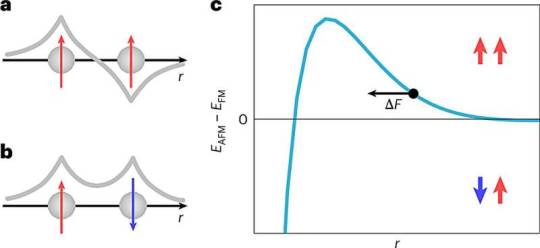
Dramatic stretch in quantum materials confirms 100-year-old prediction
Research from the University of St Andrews has set a new benchmark for the precision with which researchers can explore fundamental physics in quantum materials. The work has implications extending from materials science to advanced computing, as well as confirming a nearly 100-year-old prediction. The researchers explored magnetoelastic coupling, which is the change in the size or shape of a material when exposed to a magnetic field. It is usually a small effect, but one that has technological consequences. A team from the School of Physics and Astronomy at the University of St Andrews has now discovered that this effect is remarkably large in a case where one wouldn't have expected it—in a transition metal oxide. Oxides are a chemical compound containing at least one oxygen atom and one other element in its chemical formula. High-temperature superconductors are one of the most prominent examples of a transition metal oxide.
Read more.
12 notes
·
View notes
Text

Roman Silver Coin Hoard Found in Romania
A metal detectorist unearthed a huge haul of 1,500 Roman coins in a field.
Bebe Mangeac went out with his metal detector and ended up finding hundreds of the silver pieces.
The 43-year-old visited a hilly area with sparse vegetation and soft soil.
To the untrained eye, the terrain seemed rather mundane, but Bebe felt it had a mystery that called to him.
He had his trusted metal detector with him, a model he described as “average and neither cheap nor top end.”
“I do it for exercise, for the outdoors, and you never know, I might find something interesting,” Bebe told What’s The Jam.
His equipment then detected something under the surface, apparently not too deep.
Bebe started digging on the hilltop in the village of Letca Veche, south west of Bucharest, Romania, situated on the border with Bulgaria.
He thought to himself, “This could be something really good.”
With firm but careful movements, he began to push aside the topsoil.
What followed made his heart beat even faster: the first coins began to appear.
They seemed to be silver with traces of oxidation, but clearly defined.
Then he found ceramic shards that came from a storage vessel, possibly an amphora or a dolium.


Bebe added: “My hands were shaking.
“The coins kept coming out.
“I didn’t want to leave any behind.
“When you realise you’ve made a hard-earned discovery, part of you wants to celebrate.
“The other, more instinctive part tells you to hurry up.
“Every minute of light was important, especially since the size of the monetary treasure was enormous.”
Along with the ceramic fragments, he ended up unearthing 1,469 silver Denarius coins that were hidden in the ground around 1,700 years ago.
Bebe said: “I didn’t count them all there and then, but it felt like there were a lot.
“I mean, a lot.”


He came across the impressive haul on Saturday (19 Apr).
In Romania, citizens have a 72-hour period to hold onto artifacts of historical significance before surrendering them to the relevant authorities.
If the haul is classified as treasure, a reward of 45% of its value is offered to the finder, while a standard find receives a 30% reward.
Bebe said: “At home, my family and I felt a combination of joy and worry.
“I had over 1,000 silver coins. And the biggest worry was that Easter was coming up, and I had to respect the 72-hour deadline imposed by law.
“Fortunately, the holidays ended on time, so I took them down to Letca Town Hall on Tuesday.”
The police took part in the handover and carefully took note of the coordinates of the discovery site.
The area will be declared an archaeological site, and experts will carry out their investigations over the coming months.
The coins were all made of silver and came from different periods, some depicted Emperor Trajan, while others had elephants, a popular symbol in Roman iconography.
They appeared to be part of a collection that was accumulated over time.
The value of the haul has yet to be calculated.
The artefacts are currently in the hands of the County Directorate for Culture.
It is believed that they will eventually be displayed at the Teohari Antonescu County Museum in Giurgiu.
By Lee Bullen.



226 notes
·
View notes
Text
Two tailed siren candelabras
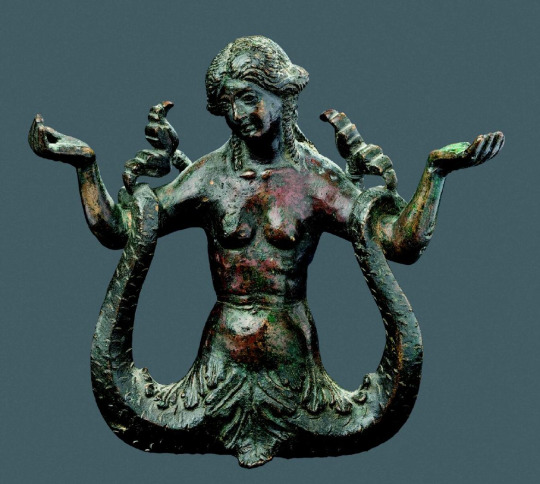
After the Renaissance, the two tailed siren was used more in decorative art than as a meaningful figure. However, she keeps her iconic pose, likely inspired from ancient images of the Scythian snake-legged goddess: A young woman with two outstretched tails that she holds with her hands. I find it fascinating that this image remained so unchanged over the centuries, and continue in popularity.
The history of these siren candlesticks, produced in several workshops in Italy in the 1500s, has been chronicled by Alison Luchs in The Mermaids of Venice: Fantastic Sea Creatures in Venetian Renaissance Art, Chapter 5: Table: Bronze Sea Monsters for Private Homes in particular. Let’s admire these lovely, well-preserved two tailed sirens from museums around the world:

Candlestick in the shape of a two tailed siren. Workshop of Severo da Ravenna of Padua, Italy. Circa 1510 - 1530. In the Louvre.
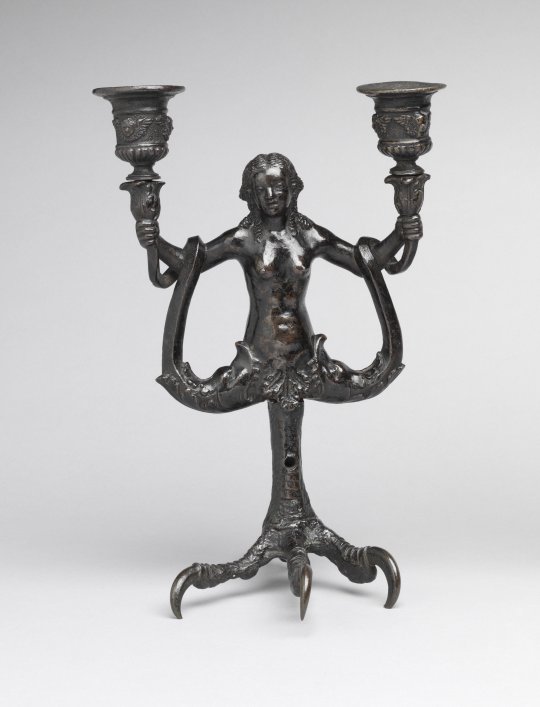
Candlestick in the shape of a two tailed siren. Workshop of Severo da Ravenna of Padua, Italy. Circa 1510 - 1530. Candleholders might be modern additions. Philadelphia Museum of Art.
Both the sirens in the Louvre and the Philadelphia museum have their tails draped around their arms, similar to this Italian fresco, and they have acanthus leaf skirts, which sirens from ancient times have often worn. Luchs suggests the eagle-claw stands could be related to the sirens' ancient form as bird women.
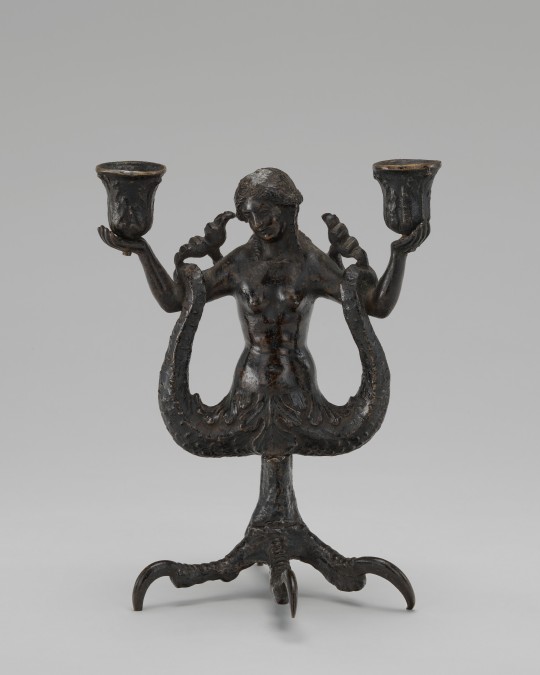

Candlestick in the shape of a two tailed siren. Workshop of Severo da Ravenna of Padua, Italy. Circa 1510 - 1530. National Gallery of Art. The museum has photos of the siren from two angles, so we can see her long hair streaming down her back.
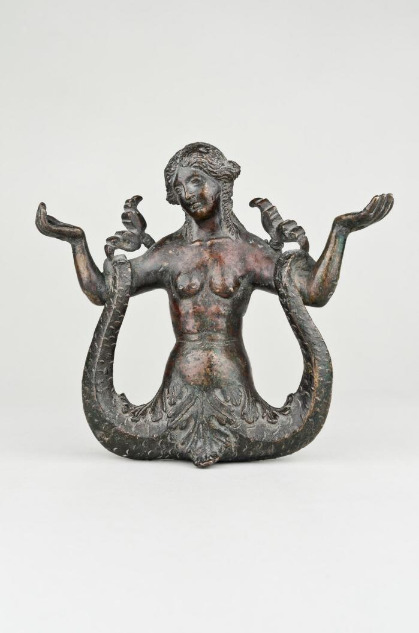
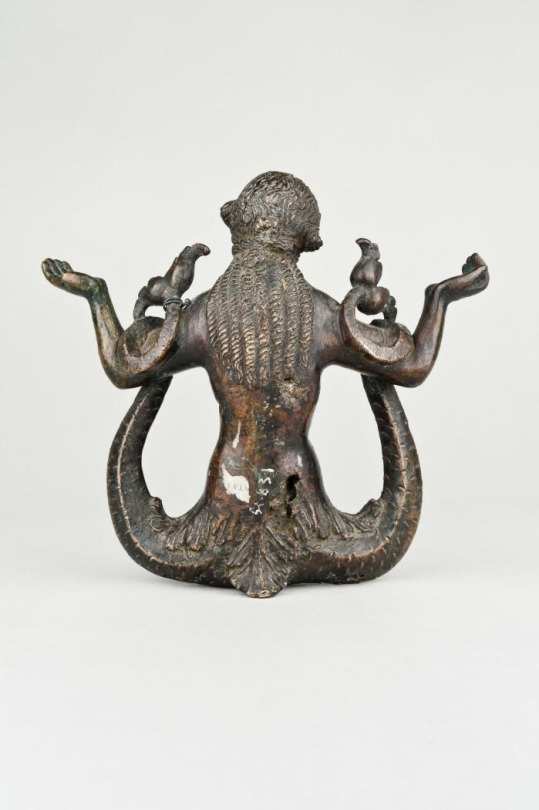
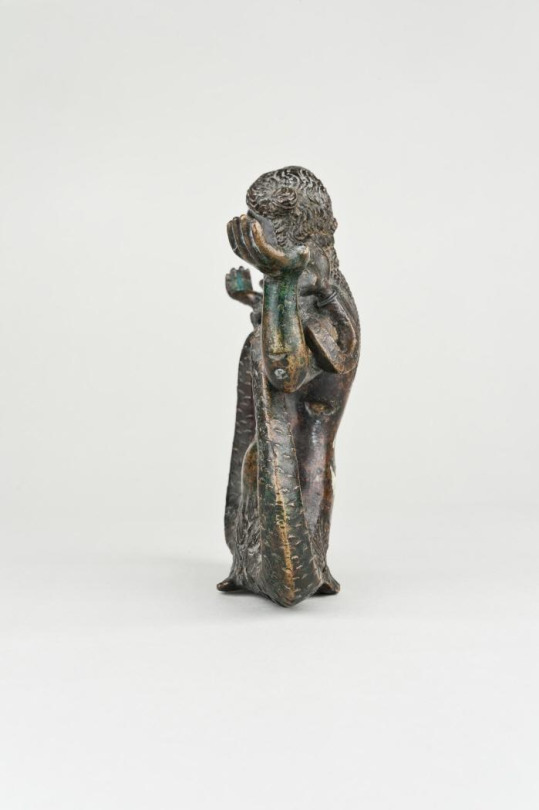
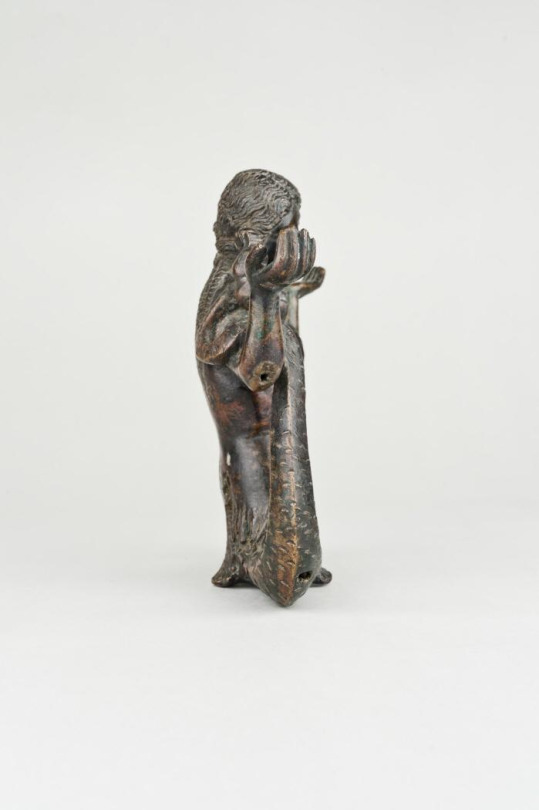
Candelabra, in the shape of a two tailed siren. Workshop of Severus of Ravenna, Italy, 1500s. National Archeological Museum, Madrid.
While the siren candlestick from the Madrid museum is damaged, the museum does have four photos of the siren, so we can see what it looks like in the round.
From the museum website:
"Candelabrum in the form of a Siren, with a nude torso, with subtle anatomical modeling; it has a forked tail, which it raises and wraps around its arms; it separates these from the body and raises them, forming with the palms of its hands the necessary base to hold two candelabras, now lost. The face of this example resembles the Venus of "Antico" preserved in the Walters Art Gallery, Baltimore. Coppel points out that different versions of the Siren theme are known; some (Foulc collection, Paris) preserve both candelabras; on other occasions, the model was used as a door knocker (examples in the National Gallery, Washington; the Berlin Museum; and the Palazzo Venezia Museum). This work was executed in the workshop of Severo Calzetta, known first as the "Master of the Dragons" and later as "Severus of Ravenna." His figures are distinguished by their abundant hair, schematic treatment of the muscles, and highly expressive hands. Triangular bases and square holes for inserting additional pieces with hand-made screws are common in his workshop. His foundry was undoubtedly one of the most prolific in Italy in the first half of the 16th century. This candelabra belonged to the Marquis of Salamanca, who amassed a significant collection of small bronzes during his business trips to Italy, which he sold to the Spanish State in 1873."
There are siren candlesticks from the same workshop in the Ashmolean Museum, University of Oxford, and in the the Museo del Bargello.
I’m going to wrap up this post with a siren door knocker. While it’s not a candlestick, she’s also Italian, and an interesting example of this motif. Note that she doesn’t have arms, as she has wings instead:

Two tailed siren, door knocker. Italian, 16th century. National Gallery of Art.
She also has the siren’s traditional acanthus leaf skirt.
Sources
Luchs, Alison. The Mermaids of Venice: Fantastic Sea Creatures in Venetian Renaissance Art. Harvey Miller Publishers, 2010. Chapter 5: Table: Bronze Sea Monsters for Private Homes.
149 notes
·
View notes
Text
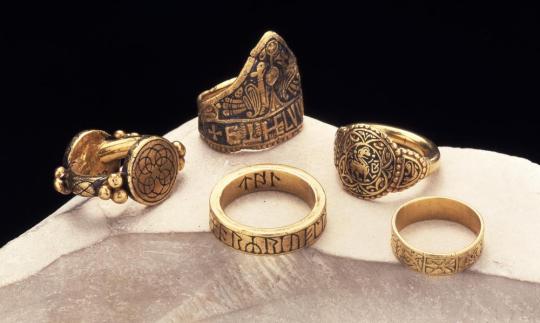
Gold rings from Anglo-Saxon England, 8th-10th century AD
from The British Museum
12K notes
·
View notes
Text
5K notes
·
View notes
Text

Using a novel X-ray technique, researchers find more durable form of copper capable of splitting water
Copper has many uses—in electrical wires, plumbing and even coins. With its abundance and relatively low price tag, copper has also long been used as a catalyst to speed up chemical reactions—notably water and carbon dioxide electrolysis, where copper serves as an electrode and catalyst for using electricity to produce fuels. The trouble is, ordinary copper isn't the most durable catalyst, so researchers have been searching for ways to improve on that. One approach is to oxidize it, a process essentially the same as rusting iron. In the 1970s, chemist Marcel Pourbaix theorized that particularly durable forms of highly oxidized copper should exist. Researchers have been hunting for those forms ever since. Now, at last, a team led by researchers at the U.S. Department of Energy's (DOE) SLAC National Accelerator Laboratory have found this elusive form of copper through advanced computational methods and state-of-the-art experimental techniques.
Read more.
17 notes
·
View notes
Text

Happy summer solstice, Northern Hemisphere!
The summer solstice – the beginning of astronomical summer – falls on June 20, 2025 (June 21 UTC). It’s the longest day of the year and marks the change of seasons. For our friends in the Southern Hemisphere, it’s the shortest day of the year and the beginning of winter.
Earth orbits at an angle, so half the year, the Northern Hemisphere is tilted toward the Sun — this is summer in the Northern Hemisphere, and winter in the Southern Hemisphere. The other half of the year, the Northern Hemisphere is tilted away from the Sun, creating winter in the north and summer in the south. Solstices happen twice per year, at the points in Earth’s orbit where this tilt is most pronounced.
How do you plan on spending the longest (or shortest) day of the year? 😎
2K notes
·
View notes







